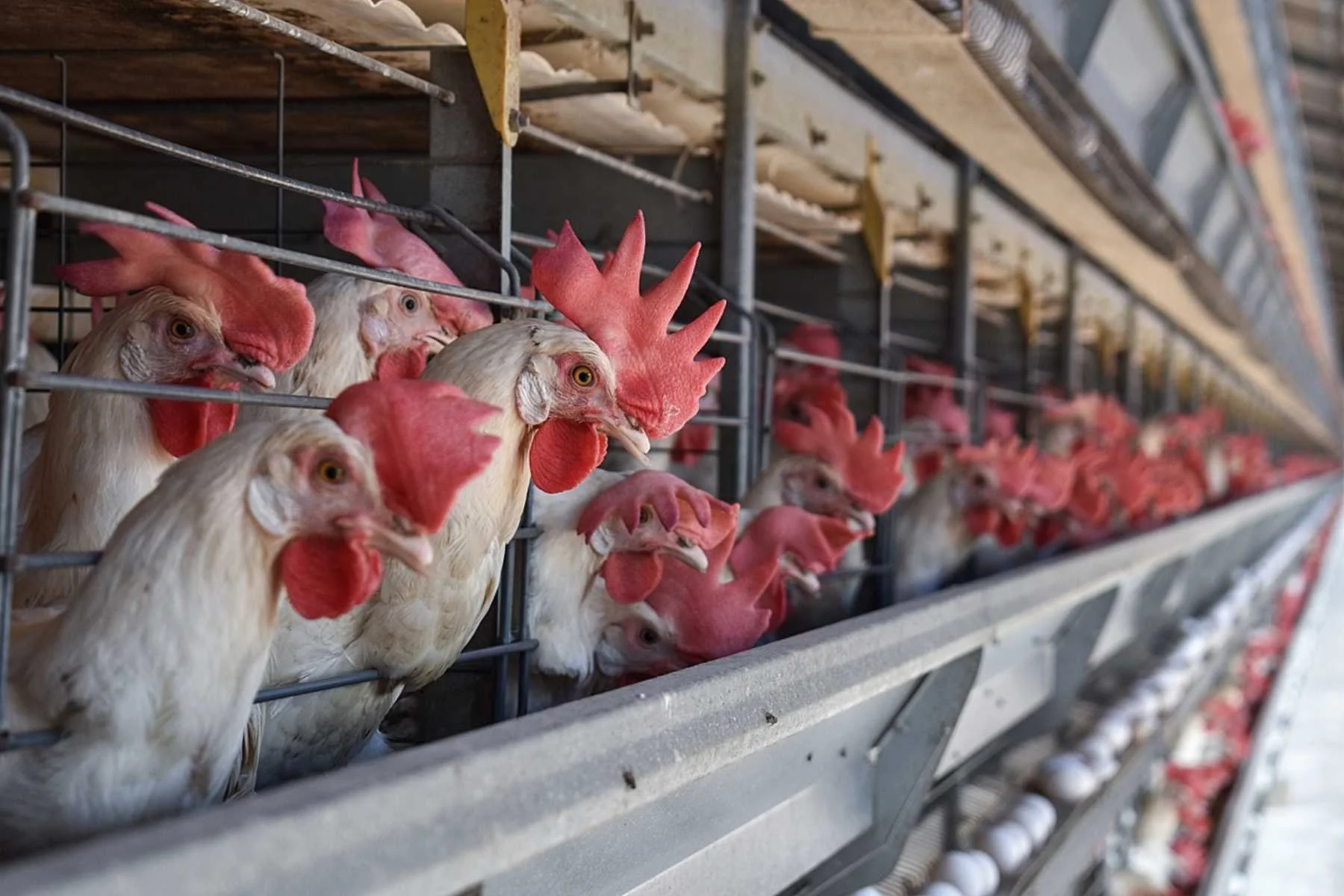The dangers of antibiotic use in animal agriculture
Antimicrobial resistance was directly responsible for the deaths of 1.27 million people in 2019, according to the World Health Organization (WHO). Antimicrobial resistance includes antibiotic-resistant bacteria, which develop through the misuse of antibiotics. This can include overprescription of antibiotics by doctors or failure by patients to complete their entire round of antibiotic treatment. But there is another major contributing factor to the development of antibiotic resistance: animal agriculture.
Credit: Andrew Skowron/Open Cages
In the United States, data from the Food and Drug Administration suggest that around 80% of antibiotics are sold for use in animal agriculture, and 70% of those are medically important. As bacteria become resistant to more and more antibacterial drugs, these medically important antibiotics become more important as options for treatment become slimmer. The Global Antimicrobial Resistance and Use Surveillance System (GLASS) found that rates of antibiotic-resistant strains of E. coli and methicillin-resistant Staphylococcus aureus (MRSA) were alarmingly high - 42% and 35% respectively. What this means is that bacterial infections that were previously easy to treat are now becoming difficult or even impossible to treat. MRSA killed 121,000 people in 2019.
Using antibiotics in animal agriculture is feeding this problem. As antibiotics are used and overused it gives bacteria a chance to mutate and develop resistance to them. This becomes possible on animal farms with their rampant use. In an article from Scientific American, Dr. Gail Hansen summarizes this troubling situation; “modern factory farms are the ideal breeding grounds for antibiotic-resistant infections: many animals are raised in crowded, unsanitary conditions. Add to that the fact that the antibiotics are given at low doses that can kill off weak pathogens while inadvertently selecting out the strongest ones, and you've got the ‘perfect storm’ to create bacterial resistance.” Despite scientists acknowledging the problem with antibiotic overuse in animal agriculture and the growing threat of antibiotic-resistant bacteria, these practices continue.
“Modern factory farms are the ideal breeding grounds for antibiotic-resistant infections.”
If this threat is growing, now claiming the lives of hundreds of thousands of people each year, why do we continue to use antibiotics at such high levels in animal agriculture? It all goes back to World War II-era research conducted by pharmaceutical companies. These companies began testing antibiotics on farmed animals, discovering something unexpected in the process. While the antibiotics helped reduce infection, they had the unintended side effect of greatly increasing the size and speed with which animals grew. In 1925 it took 125 days to raise a chicken for slaughter at a weight of 2.5 pounds. By 2023 it took half as long to raise a chicken to slaughter and at slaughter, they weighed more than twice as much - 47 days and 6.54 pounds.
As antibiotics helped improve efficiency, farm sizes also grew. In 1946 farms with over 100 chickens were classified as large. By 1999, the scale of chicken farming had expanded so significantly that to be considered large a farm needed to have 350,000 or more chickens. These trends also occurred with other farms raising animals for food; more than 99% of animals were raised on factory farms in the United States in 2022. This presented a new problem and a new threat for antibiotic use. So many animals packed into such a small space means that disease is able to spread easily, which in turn justifies further antibiotic use, and the cycle continues as farms expand. But is this rampant use of antibiotics necessary?
Can we combat this problem?
The United States Department of Agriculture (USDA) estimates that the cost of reducing antibiotics used in animal agriculture for production purposes would be less than 1%. As of October 2024, the average price for a pound of pork chops in the U.S. was $4.27, a pound of chicken breast was $4.04, and a pound of sirloin steak was $11.50. This means that eliminating antibiotic use would mean consumers paying 4 cents extra for pork chops, 4 cents extra for chicken breast, and 12 cents more for sirloin steak. No one likes paying more for food, but given the rising threat of antibiotic resistance, this small price increase would certainly be worth the lives saved.
The Food and Drug Administration (FDA) took an important step toward combating this problem in 2023 by banning the over-the-counter sale of medically important antibiotics for livestock - now requiring a prescription from a veterinarian to be purchased. This is good news. However, this problem is not limited to the United States - it is global because the meat industry is global. For comparison, the United States uses an average of 31 mg of antibiotics per kilogram of livestock. China, the largest meat producer in the world, uses almost ten times as many antibiotics - 208 mg per kg of livestock.
Rather than regulating antibiotic use in production, countries could implement regulations on consumption - only allowing meat raised without certain antibiotics or levels of antibiotics to be sold and consumed.
The best option, of course, is to shift away from animal agriculture altogether - replacing meat with plant-based options that don’t contribute to the problem of antibiotic resistance. Doing so will save the lives of both humans and animals.
Written by Michael Briscoe
Michael Briscoe is an Assistant Professor of Sociology at Colorado State University Pueblo. He is the author of the upcoming book Stocks or Stakeholders: The Benefits of Considering Animal Interests. His research and teaching focus on the interconnections of human, animal, and environmental well-being.
Want to write for Species Unite? We are looking for well-written stories focusing on content that informs, inspires, and engages our audience with topics surrounding animal rights.
We Have A Favor To Ask…
Species Unite amplifies well-researched solutions to some of the most abusive animal industries operating today.
At this crucial moment, with worldwide momentum for change building, it’s vital we share these animal-free solutions with the world - and we need your help.
We’re a nonprofit, and so to keep sharing these solutions, we’re relying on you - with your support, we can continue our essential work in growing a powerful community of animal advocates this year.






